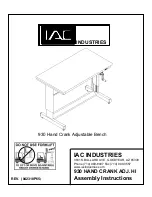
USB 2.0 Interface
USB 2.0 Interface
USB 2.0 Interface
USB 2.0 Interface
HP DAT drives are available with a choice of interfaces: the standard SCSI interface where SCSI
connectivity is required and the newly introduced USB 2.0 interface.
The USB (Universal Systems Bus) interface was conceived out of a need to simplify computer peripheral
device connection. It has been so successful that the majority of computer systems and servers shipped
today offer multiple native USB 2.0 ports.
HP is the first company to develop a native USB DDS/DAT tape drive. Where other "USB tape drives" rely
on a USB converter, HP's USB interface is fully integrated with the drive and uses the SCSI command set
within the USB payload. The benefit of this implementation is that it gives the drive full SCSI functionality
and the flexibility of USB without the additional cost of a converter.
By offering native USB 2.0 DAT drives, HP aims to provide customers with a number of benefits:
Greater usability
Plug-and-play connectivity- the system automatically detects and configures the tape drive.
The DAT drive is installed and ready to backup in less than 60 seconds.
Microsoft fully supports USB devices natively in their operating systems providing robust,
secure configuration and installation wizards.
Cables are easily identifiable, easy to attach without the need for thumb-screw and robust
enough to ensure reliable retention.
Resource abundance
Native USB ports are universally available in systems and servers
Multiple ports ensure that port resources are widely available, reducing the conflict between
devices over scarce connectors.
Port expansion is easy, USB hubs can be installed to add additional ports supporting up to
127 devices on a system
Low cost, reliable connectivity
By providing native USB DDS/DAT drives there is no need for customers to purchase
additional host-bus adapters
HP's USB 2.0 implementation benefits from the built-in reliability and failure recovery
inherent in the underlying SCSI protocol
USB 2.0 has multiple levels of physical error detection and recovery which ensure reliability
on a par with SCSI and Fibre-channel interfaces.
USB 2.0 compliance certification provides thorough, ongoing reliability and quality control.
A well implemented USB network should use only USB 2.0 compliant components,
including USB 2.0 certified cables.
Sustainable performance
In HP tests it has been shown that USB 2.0 can sustain the performance of an HP DDS/DAT
drive at around 30MB/sec, a bandwidth that would sustain the HP DAT 72 drive operating
with a compression ratio of 9:1!
USB 2.0 performance provides sufficient bandwidth to support all future generations of
DDS/DAT drives specified on the DAT Manufacturers Group Roadmap
Compression
Compression
Compression
Compression
DDS uses built-in hardware compression using the 'DCLZ' data compression algorithm. Data
compression is host-selectable with the default that compression is turned on. Typical data compression
is 2:1, but actual compression depends on the type of data being compressed and can be more or less
than 2:1.
QuickSpecs
HP StorageWorks DAT Drives
HP StorageWorks DAT Drives
HP StorageWorks DAT Drives
HP StorageWorks DAT Drives
Product Highlights
DA - 11883 Worldwide — Version 15 — March 20, 2006
Page 9










































